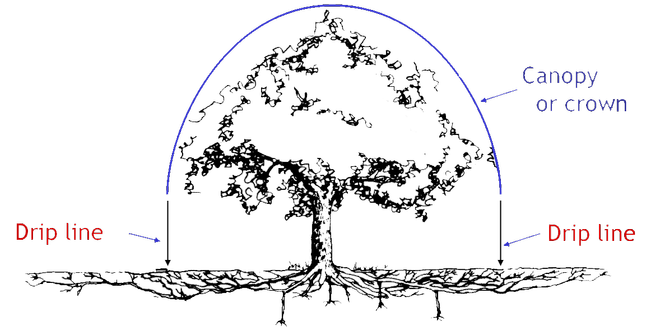Tending Your Trees, Part 2
Trees need water. No surprise there. Even after a good rain year in 2016-17, the stress of multiple drought years can still be seen in the larger landscape trees in any Central Valley town or city. Once they have lost roots to repeated dry seasons, the loss to a tree's canopy may not be recoverable, since they don't have sufficient living roots to take advantage of the available water in subsequent years. This may be especially true for the species with a higher water requirement, but even native trees in natural landscapes suffer when droughts drag on an on.
Although most landscape plants can be replaced with relative ease and little expense, trees take years to reach maturity and that represents a much bigger loss of time and money if lost to poor care. For this reason, most horticulturists I talk to recommend catering irrigation to trees during restricted-water years as well as being sure they are watered properly during non-restricted years. So, how do you do that?
To make sure you are preserving your trees' health, scope out their irrigation zone. Most tree roots extend far beyond 
If you get runoff before you've irrigated deeply enough, use the cycle-and-soak method of application until you've reached your target. How often will depend on your soil type. If you have really sandy soil, twice a month in the summer should be sufficient to keep trees healthy; clay soil will only need a monthly deep soak for well-established trees.
Now, I have something scandalous to tell you. Trees and lawn don't mix. What?! Horticulturally speaking, their requirements are quite different, but in the real world they are planted together all the time. Tree roots spread deep and wide while lawn roots stay in the top 6-12 inches of soil. Trees almost always require no additional fertilization, but lawn will need a regular regimen of nitrogen, at the very least, to keep a good, dense stand of turf. Whether you are letting the lawn die to replace it, putting it on restricted water, or keeping it healthy, an additional deep-soaking of trees on a monthly basis will ensure that their roots go down deep and their canopy stays healthy. To put together a simple, low-cost irrigation system to supplement tree water, see this link: TRIC: tree ring irrigation contraption .